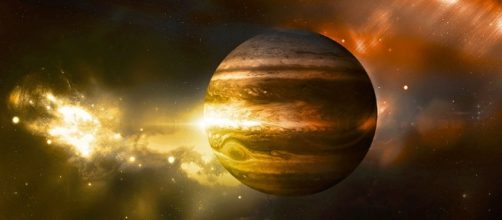Researchers have discovered that Jupiter is the oldest known planet in the solar system. Scientists from the Institut für Planetologie at the University of Münsterin Germany and Lawrence Livermore National Laboratory made the breakthrough discovery. By looking at tungsten and molybdenum on meteorites composed of iron they discovered that meteorites were made up of clear nebular reservoirs, which coexisted but became separated after a span of one four million years following the formation of the Solar System.
Jupiter’s formation
The scientists explained that the only way through which the two reservoirs could have been separated is if Jupiter formed in between the two.
This would create a divide in the plane of dust and gas from the stars and prevent a further exchange of materials between the two reservoirs. The researchers concluded that Jupiter is the oldest-known planet among the others in the solar system and formed before the gas from the solar nebula dissipated.
Jupiter is the largest planet in the system and its formation would have affected the solar accretion disk. Previous studies also revealed that the planet formed in the early stages of the solar system. However, this is the first time that the formation of the planet has been dated.
Thomas Kruijer, lead author of the paper on the research, claimed that dating Jupiter’s age is especially challenging as there are no samples from the planet’s surface like that of Earth, Mars, and the moon.
This is why the researchers had to rely on the isotope signatures from meteorites, derived from asteroids to determine Jupiter’s age.
Other inferences from the study
The team of scientists were able to determine that Jupiter’s core formed around one million years after the solar system’s existence began. Due to its quick creation and large size, the planet obstructed the flow of material from one side of the disk to the other. This may be the reason behind the lack of super-Earth-like planets being formed at the outer edge of the solar system. This means that Jupiter stopped the outer planets from gaining a higher mass than that of the Earth.
The team was also able to determine that Jupiter grew to around 20 times the Earth’s mass within the initial million years.
This mass continued to increase further over the next millions of years. It reached 50 times Earth’s mass after three to four 4 million years after the solar system’s formation.
Through these studies, the scientists were able to infer not only the age of Jupiter but were also able to pinpoint what the effects of its formation were. It grew large with time but prevented the outer planets from growing to masses greater than the Earth. The results of the research were published in Proceedings of the National Academy of Sciences.


